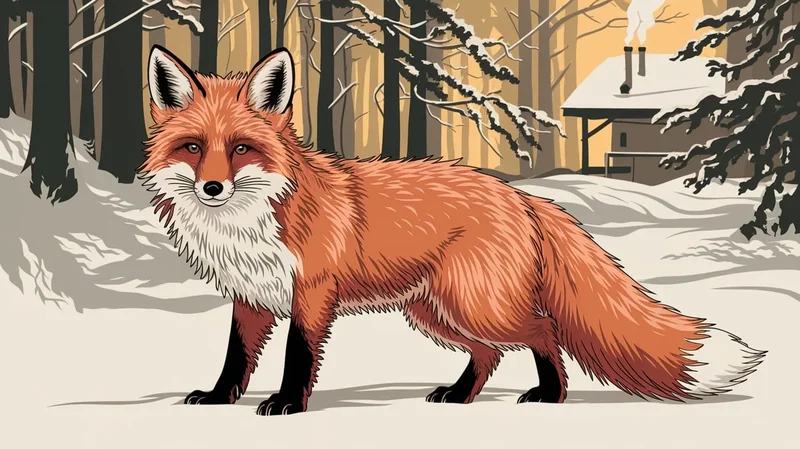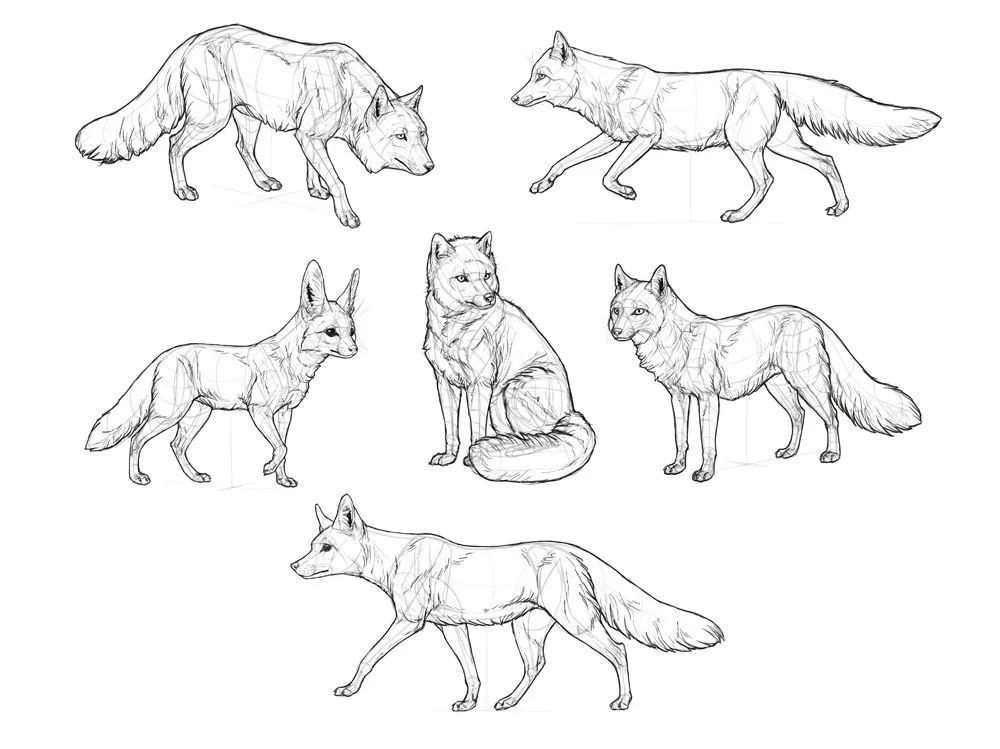You’re at the ideal place if you’re keen to learn how to draw a fox and want to get better at it. Drawing:1enzi6g2cvg= Fox, animals, particularly foxes, can be enjoyable and fulfilling. We’ll walk you through the Drawing:1enzi6g2cvg= Fox approach in this guide, which blends conventional and contemporary methods.
This method will assist you in producing an intricate and appealing drawing of a fox. This detailed tutorial will make it easier than ever to become proficient at drawing a fox, regardless of your level of experience. Let’s begin!
Materials Needed For Drawing:1enzi6g2cvg= Fox
Pencils (HB, 2B, 4B): Use different pencil grades to create varying line weights and shading effects.
Eraser: Essential for correcting mistakes and refining details in your sketch.
Paper: Choose a smooth drawing paper that’s suitable for both sketching and shading.
Reference Images of Foxes: Keep images of foxes handy to guide you in capturing accurate proportions and features.
Optional – Colored Pencils or Watercolors: Add vibrant colors to your drawing for a more dynamic and realistic look.
Step-by-Step Guide to Drawing:1enzi6g2cvg= Fox
Step 1: Basic Outline of the Fox
Begin by outlining the fundamental structure of your drawing:Fox = 1enzi6g2cvg. Draw the head as a circle and the body as an oval.
To make adjustments later, keep your lines light. The body should be more elongated, and the head should be rounder and smaller. To create the fox’s stance, add basic lines for the legs and tail.
Step 2: Refining the Head
Next, focus on the details of the head. Draw two triangles for the ears on top of the circle. Because of their large, pointed ears, foxes seem alert.
Add guidelines to the face to assist symmetrically position the eyes, nose, and lips. The eyes are almond-shaped, and the nose is small but noticeable. Gently slant the eyelids to achieve that characteristically cunning, devious appearance.
Step 3: Shaping the Body and Legs
Refine the body now. Draw from the chest to the hindquarters, tapering the torso since foxes have lovely, slim bodies.
To mimic the fox’s light, nimble appearance, keep the legs long and slim. at finish the appearance, add thin, tiny paws at the end of each leg.
Step 4: Drawing the Tail
One of the fox’s distinguishing characteristics is its tail. Use curving lines to add texture and volume to the large, bushy tail that extends from the body.
A noticeable tip at the end, which is frequently white in many fox species, should be added.
Step 5: Adding Fur Details
Fur can now be added after the basic form has been formed. Use quick, short strokes around the drawing’s neck, ears, and tail to create a genuine fuzzy appearance:Fox = 1enzi6g2cvg.
The fox should have thicker fur on its neck and tail and shorter hair on its chest and legs to maintain a sleek appearance.
Step 6: Shading and Texture
Where light wouldn’t naturally reach, apply shading to give your drawing:1enzi6g2cvg= Fox more depth. Pay attention to places like the bottom of the body, under the tail, and the features of the face.
For heavier shading, use a 4B pencil; for brighter highlights, use an HB pencil. For a soft, silky fur texture, you can also dab in some spots.
Step 7: Final Touches and Color (Optional)
At this point, you ought to explain your drawing:1enzi6g2cvg= Fox. If you want to add some color, use orange or reddish for the body, white for the breast and tail tip, and black or brown for the legs and nose.
Watercolors give a softer, more blended look, but colored pencils allow for more accuracy.

Advanced Tips for Drawing:1enzi6g2cvg= Fox
- Study Fox Anatomy in Detail
Deepen your understanding of fox anatomy by examining their skeletal and muscular structure. This will allow you to draw your fox in dynamic, realistic poses, such as running, leaping, or resting. - Focus on Expression and Posture
Foxes are known for their clever expressions and agile body language. Experiment with different facial expressions and postures to give your fox a lively and intelligent look. - Master Fur Texture and Layering
Use layering techniques to create realistic fur by focusing on the flow of the fur on different parts of the body. Add depth with various stroke lengths and pressures for a natural texture. - Play with Lighting and Shadows
Incorporate advanced lighting techniques to give your drawing depth. Experiment with light sources to create realistic shadows and highlights, making the fur appear more lifelike. - Color Blending and Detailing
Enhance the realism of your drawing by using subtle color transitions in the fox’s fur. Blend shades of orange, brown, and gray to create depth and add realistic highlights and shadows. - Experiment with Backgrounds
Create context for your drawing by adding natural settings like forests or snowy landscapes. You can also try abstract backgrounds to give your drawing an artistic twist. - Add Motion and Gesture Drawing
Capture the grace and fluidity of a fox in motion using gesture drawing techniques. This helps convey the energy and movement of the fox without focusing on intricate details. - Enhance Your Drawing with Digital Tools
Use digital software like Procreate or Photoshop to refine your drawing. Digital tools allow for advanced shading, blending, and layering, giving you more control over your final artwork. - Incorporate Realism with Unique Stylization
Don’t hesitate to add your unique artistic flair. Blend realism with stylized features, or incorporate fantasy elements like wings or glowing fur, making your Drawing:1enzi6g2cvg= Fox truly stand out.
Common Mistakes in Drawing:1enzi6g2cvg= Fox
When using the Drawing:1enzi6g2cvg= Fox method, many artists—both beginners and intermediates—may encounter challenges that affect the accuracy, proportion, or detail of their work.
To help you avoid common pitfalls, here are some mistakes to watch out for and tips on how to overcome them.
- Incorrect Proportions – A frequent error is drawing the fox with the wrong proportions, like an oversized head or legs that are too short.
- Overly Simplified Ears – Fox ears are unique but drawing them too large or small can throw off the entire look.
- Flat Fur Texture – Capturing realistic fur texture is crucial. Simply outlining the body without detail will make the fox look flat and unnatural.
- Unnatural Poses – Drawing stiff poses can make your fox appear lifeless, lacking the graceful motion foxes are known for.
- Neglecting the Eyes – The eyes define a fox’s expression; missing key details here can lose its charm and intelligence.
- Incorrect Tail Size – The tail is a defining feature, and getting its size or placement wrong affects the overall balance of the drawing.
- Over/Under-Shading – Balance is key. Too much shading can make your drawing look muddy, while too little will make it seem flat.
- Ignoring References – Drawing from memory without references often leads to inaccurate depictions of the fox’s anatomy and features.
- Lack of Patience with Details – Rushing can result in missed details and sloppy execution. Take your time for a polished result.
- Inconsistent Line Weight – Using the same line thickness throughout the drawing can flatten the image, so vary your line weight for depth and realism.
Conclusion: Drawing:1enzi6g2cvg= Fox
You will be well on your way to drawing a stunning and lifelike fox if you follow the instructions in this article. The Drawing:1enzi6g2cvg= Fox approach is a great technique for both novice and seasoned artists because it blends creativity with an emphasis on anatomical precision. This method will help you convey the actual spirit of a fox on paper, regardless matter whether you want to leave your drawing monochromatic or add vivid colors to make it come to life.
Have fun with your drawings!
FAQS
1. What is the Drawing:1enzi6g2cvg= Fox method?
The Drawing:1enzi6g2cvg= Fox method is a step-by-step approach to drawing a fox that focuses on creativity and accurate proportions. It helps artists of all levels improve their skills while capturing the fox’s natural beauty.
2. Is the Drawing:1enzi6g2cvg= Fox method suitable for beginners?
Yes, this method is great for beginners. It breaks down the process into simple steps, making it easy to follow and practice.
3. Can I use colors with the Drawing:1enzi6g2cvg= Fox method?
Absolutely! While you can create a stunning monochrome drawing, adding vibrant colors can bring your fox to life. Use your creativity to choose the style that suits you best.
4. How can I avoid common mistakes in Drawing:1enzi6g2cvg= Fox?
To avoid common mistakes, pay attention to the proportions, study reference images, and practice drawing fur textures. Take your time with details like the eyes and tail to make your drawing more realistic.
5. Do I need to use reference images for Drawing:1enzi6g2cvg= Fox?
Yes, reference images are helpful, especially for capturing accurate anatomy and details. They provide a visual guide to ensure your drawing looks realistic and balanced.
6. How can I improve my fox drawing using the Drawing:1enzi6g2cvg= Fox technique?
Practice frequently, concentrate on fine-tuning details, and try out various positions and shading methods. Your drawings will get better the more you practice.
Read Also: Houda Cookie Company Berwyn Illinois: A Taste of Sweet Perfection


